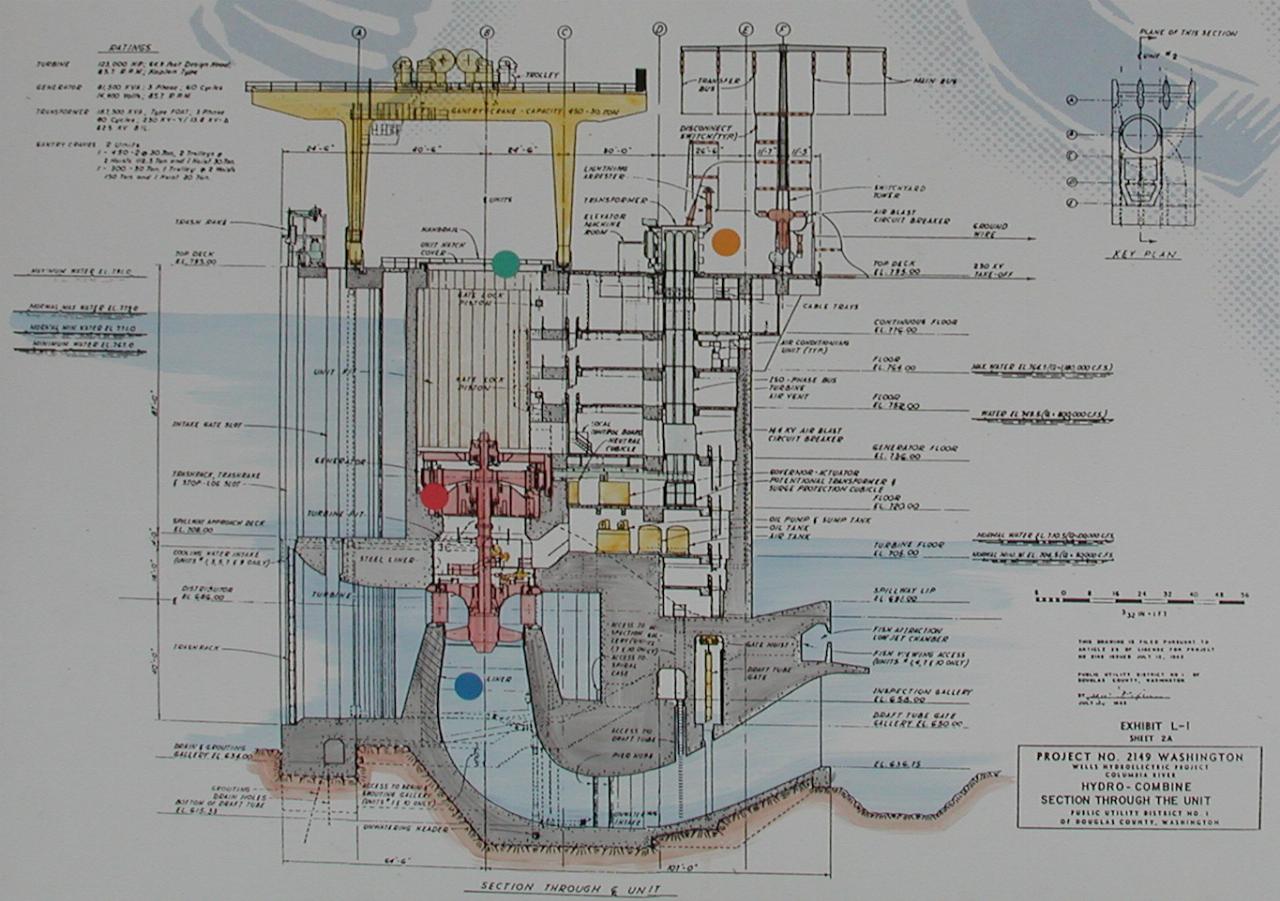
From the display board at the dam:
Wells Dam is unique! Unlike others on the Columbia River, where powerhouses, spillways and switchyards are housed in separate structures, here at Wells Dam all of these functions occur in a single structure - that's why it's called a "hydrocombine dam".
Wells Dam is a "run-of-river" project - water passes through the dam at the same rate that it enters the reservoir. By operating and controlling the generating units individually, the plant can generate power efficiently from the river's lowest flow rates to as high as 200,000 cubic feet (5,700 cubic metres) per second. The dam's hydroelectric turbines respond very quickly to changes in the power system requirements. Computer controllers adjust plant power output every few seconds to satisfy the needs of electricity users.
The dam's ten generating units are capable of producing 840 Megawatts - enough to server the average requirements of more than 500,000 homes

The four coloured dots on the image indicate the funtion of that area. The blue dots are the "turbine runners", the area where the water flows through the turbine blades spinning the alternator (generator).
The red dot is the generator (more correctly an alternator). The orange dot is the transformer yard, to convert the low voltage from the alternator into a higher voltage for transmission (doing so reduces losses in the wires, and reduces the size of wire required)
The green dot seems to indicate the area in the wall reserved for removing the turbine and/or alternator.